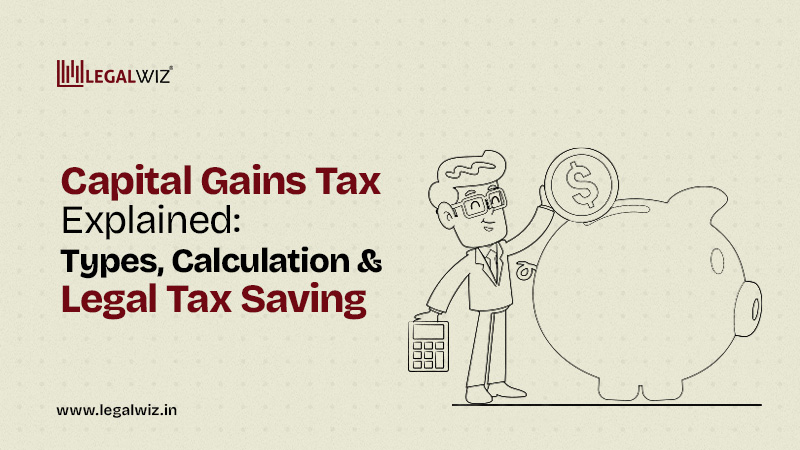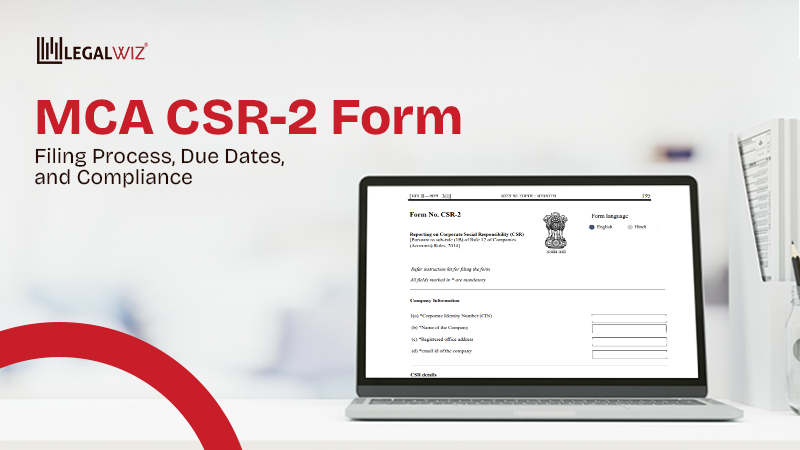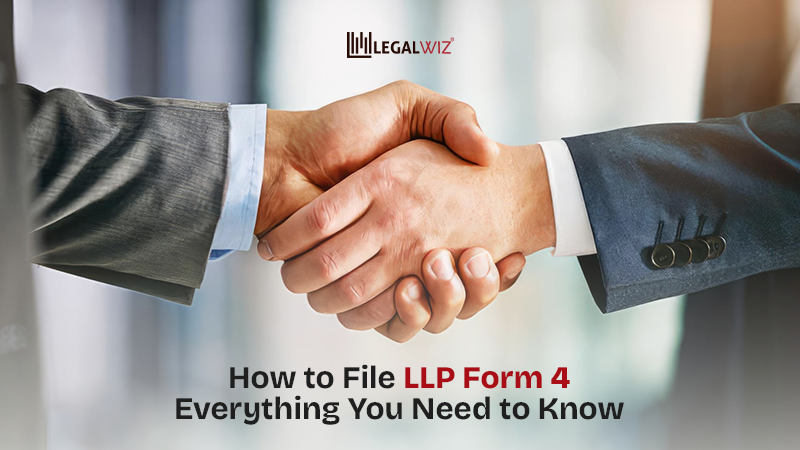Capital Gains Tax Explained: Types, Calculation & Legal Tax Saving
“Made money from selling shares or property? Congrats—but now meet Capital Gains Tax, your profit’s new roommate.”
Here’s the thing about selling assets: Stocks, mutual funds, that plot of land, or even your dream home – when you sell, there’s usually a nice little bonus left over: profit.
While you’re busy planning how to spend it, the tax department is already planning how to tax it. That’s where Capital Gains Tax (CGT) steps in – a levy on the profit you make from selling assets. And here’s the kicker: you can’t skip reporting CGT in your Income Tax Return. File it right, or risk turning that sweet profit into a tax headache.
Think capital gains tax is just another “government money grab”? Nope! It’s there to make sure your profits from selling shares, property, or other investments get taxed fairly, just like your monthly salary or business income.
Here’s the thing: understanding capital gains tax isn’t optional. It’s the fine line between keeping a big chunk of your hard-earned profits… or watching them disappear into the taxman’s pocket faster than you can say “cha-ching!”
| Pro Tip: But hey, capital gains tax is way easier to understand once you’ve nailed your ITR basics. If filing taxes feels like decoding a foreign language, don’t stress—start with the ABCs first. Our quick guide is here to help: ITR Filing Fundamentals. |
In this guide, we’ll:
- Decode short-term vs long-term capital gains
- Explain how each is taxed (without the jargon headache)
- Share smart, legal tax-saving tricks to help you celebrate your profits, not stress about the final tax bite.
Because making money is fun, paying more tax than you should? Not so much.
What is Capital Gains Tax in India?
Think of Capital Gains Tax (CGT) as the government’s “thank you note” (with a bill attached) every time you make a profit from selling something valuable. It’s the tax you pay on the money earned by selling a capital asset, not on the asset itself, and definitely not while you’re just holding it.
What Counts as a “Capital Asset”?
Pretty much anything that can make you richer when you sell it. This includes:
- Property – land, houses, commercial buildings
- Stocks and shares – listed or unlisted
- Mutual funds – equity or debt schemes
- Gold and jewelry – even that family heirloom can count
- Other investments – bonds, debentures, etc.
If it can be bought, sold, and potentially earn you a profit, it’s a capital asset in the eyes of the taxman.
New Budget, New Rules! Every tax deduction just got a fresh set of tweaks, and Capital Gains Tax isn’t spared either. Want the lowdown on what’s changed (and what it means for your profits)? Check out our quick guide here: New Income Tax Rules 2025-26.
When Do You Pay Capital Gains Tax?
Here’s the sweet deal: The taxman doesn’t bother you just for owning stuff.
Your flat, your gold stash, your precious stocks – all safe from tax as long as you hold them tight.
But the minute you sell and make a juicy profit, guess who shows up for a slice of that pie? Yep, Mr. Capital Gains Tax himself.
Types of Capital Gains: Short-Term vs Long-Term
Capital gains aren’t a “one-tax-fits-all” deal.
How long you cling to that asset before selling it decides its fate:
- Sell quickly = Short-Term Capital Gains (STCG)
- Hold on longer = Long-Term Capital Gains (LTCG)
And guess what? This little timing game changes the tax bite on your profit. So, the clock doesn’t just tick—it decides your tax bill.
Short-Term Capital Gains (STCG)
STCG applies when you sell your asset within a short holding period, defined differently for various asset types:
- Listed Shares & Equity Mutual Funds: Sold within 12 months of purchase.
- Real Estate (Property, Land, Buildings): Sold within 24 months.
- Gold, Debt Funds, and Other Assets: Sold within 36 months.
Tax Rate:
- Shares/Equity Mutual Funds: 15% (if STT is paid).
- Other Assets: Taxed as per your income tax slab rate.
Long-Term Capital Gains (LTCG)
Patience pays (literally) when it comes to capital gains tax!
Hold your asset long enough and you unlock LTCG status, meaning lower tax rates and juicy perks. Here’s the cheat sheet:
- Listed Shares & Equity Mutual Funds: Hold > 12 months = LTCG heaven.
- Real Estate: Keep for 24 months before selling to score benefits.
- Gold, Debt Funds & Others: Needs a 36-month stay in your pocket.
Tax Perks:
- Equity: Gains above ₹1 lakh are taxed at just 10%, no indexation magic here.
- Property, Gold, Debt Funds: Taxed at 20%, but with indexation—aka adjusting your purchase cost for inflation so you pay tax only on real gains.
Moral of the story? The longer you hold, the friendlier the taxman gets.
Quick Snapshot of Capital Gains Tax
| Asset Type | Holding Period (STCG) | Holding Period (LTCG) | Tax Rate – STCG | Tax Rate – LTCG |
| Listed Shares & Equity MF | ≤ 12 months | > 12 months | 15% | 10% (above ₹1 lakh, no indexation) |
| Real Estate | ≤ 24 months | > 24 months | Slab rate | 20% with indexation |
| Gold, Debt Funds, Others | ≤ 36 months | > 36 months | Slab rate | 20% with indexation |
How to Calculate Capital Gains Tax (Without Losing Your Mind)
Calculating capital gains tax isn’t rocket science (and nope, you don’t need a math degree either).
It’s just about figuring out your real profit from selling a capital asset… and sharing a slice of that pie with the taxman.
Let’s break it down step by step – no calculator-induced headaches promised.
The Basic Formula: Capital Gains Math Made Simple
Capital Gains = Sale Price – Purchase Price – Expenses – Exemptions
- Sale Price: What you earned from selling the asset.
- Purchase Price: What you originally paid to buy it.
- Expenses: Brokerage, stamp duty, transfer charges – the unavoidable extras.
- Exemptions: Legal deductions for reinvestment (Sections 54, 54EC, 54F, etc.).
Pro Tip: Do the math right, claim every exemption you can, and watch that tax bill shrink.
Example: Short-Term Capital Gains (STCG)
Say you:
- Buy shares for ₹1,00,000
- Sell them in 10 months for ₹1,50,000
- Pay ₹2,000 in brokerage
Calculation:
Capital Gain = 1,50,000 – 1,00,000 – 2,000 = 48,000
Since you held the shares for less than 12 months, this is Short-Term Capital Gain, taxed at 15% (+ cess).
Tax payable = 15% of 48,000 = ₹7,200 (+ cess)
| CESS = Central Excise and Service Tax. Want to learn more about such tax terms? Check out our guide on 5 important Income Tax terms you need to know. |
Pro Tip: The quicker you sell, the higher the tax bite. Sometimes, patience = bigger savings.
Example: Long-Term Capital Gains (LTCG) with Indexation
Say you:
- Buy a property in 2015 for ₹20,00,000
- Sell it in 2025 for ₹50,00,000
- Incur ₹1,00,000 in selling expenses
Now comes the tax-saver trick – Indexation, which adjusts your purchase cost for inflation.
- CII (Cost Inflation Index): 2015 = 254, 2025 = 389
- Indexed Cost = (20,00,000 × 389) ÷ 254 = 30,62,205
Capital Gain = 50,00,000 – 30,62,205 – 1,00,000 = 18,37,795
Tax on LTCG = 20% of 18,37,795 = ₹3,67,559 (+ cess)
Pro Tip: Indexation is your BFF when selling long-term assets. It slashes your tax bill by accounting for inflation.
Quick Tax Cheat Sheet – Because Timing is Everything
- Short-Term:
- Property = Taxed as per your slab rate
- Equity = Flat 15%
- Long-Term:
- Property = 20% with indexation benefits
- Listed shares = 10% (gains over ₹1 lakh, no indexation)
Smart Move: Reinvest profits in property or bonds to grab exemptions and cut your tax bill legally.
Exemptions & Deductions on Capital Gains in India
Capital gains tax can eat into your profits, but you don’t always have to pay the full amount. Here’s the secret: The Income Tax Act allows you to save tax legally if you reinvest your earnings smartly.
Before we jump into capital gains deductions, take a quick detour and explore all thetax exemptions and deductions from 80C to 80U. It’s your cheat sheet to planning tax savings like a pro and making sure you don’t miss a single rupee-saving opportunity.
Let’s look at the main sections that help you reduce your tax bill.
Key Sections for Capital Gains Exemption – Your Legal Tax Escape Routes!
Sold your property, gold, or other big-ticket asset, and now the taxman’s knocking? Don’t panic—Sections 54, 54EC, and 54F are your magic doors to legally dodge (ahem… reduce) that capital gains tax. Let’s break them down, minus the boring jargon:
Section 54 – Swap Your Old House for a New One (and Save Tax)
Who can claim: Individuals or HUFs selling a residential house.
The trick: Reinvest your capital gain amount (not the full sale price) in another residential property in India.
Timeline:
- Buy a new house within 2 years, OR
- Construct one within 3 years, OR
- Bought a house 1 year before the sale? You’re still in the game.
Conditions to note:
- Only one house gets the exemption love.
- Don’t sell the new house within 3 years—the taxman doesn’t like quick flippers.
- Gains over ₹2 crore? Since FY 2020-21, only one property can be used for exemption.
Section 54EC – Bonds = Tax-Free Gains (Mostly)
Who can claim: Any taxpayer selling long-term land or buildings.
The trick: Park your capital gains in NHAI or REC bonds (these are govt-backed, not your friend’s start-up).
Timeline: Within 6 months of the sale.
Lock-in period: 5 years – think of it as a tax-saving time capsule.
Max investment: ₹50 lakh.
Pro tip: Interest earned on these bonds is taxable, but hey, your gains escape capital gains tax. Worth it? Usually, yes.
Section 54F – Sell Anything (Except a House) → Buy a House → Save Tax
Who can claim: Individuals or HUFs selling any long-term capital asset (gold, land, shares… basically, anything non-house).
The trick: Use the entire sale consideration (not just the gain) to buy or construct a residential house in India.
Timeline: Same as Section 54 –
- 1 year before,
- 2 years after, or
- 3 years for construction.
Condition: On the date of sale, you can’t own more than one other house besides the new one. If you’re already a mini-landlord, this section won’t help.
Reinvesting smartly isn’t just good wealth planning—it’s your legal superpower to reduce that capital gains tax bite. Choose the right section, meet the timelines, and keep the taxman happy (and your wallet heavier).
How to Save Taxes Legally on Capital Gains
1. Play the Timing Game: Sell too soon and you could miss out on great exemptions. Plan your sale date like you plan your weekend getaway.
2. Meet Your Tax Parking Lot – CGAS: Not ready to reinvest right away? Park your profits in a Capital Gains Account Scheme before your ITR due date. Think of it as reserving your tax-free seat.
3. Mix It Up: Bonds = safe but slow. Property = big returns but big bucks needed. Spread your investments, don’t put all your gold coins in one chest.
4. No Quick Flips: Sell your new property within 3 years, and the taxman comes knocking again. Hold it long enough to keep your exemption safe.
Deadlines & Conditions Recap
| Section | Eligible Asset Sold | Reinvestment Option | Deadline | Max Limit |
| 54 | Residential house | Another residential house | 1 year before, 2 years after, 3 years for construction | 1 property (₹2cr+ = 1 house limit) |
| 54EC | Long-term land/building | NHAI/REC bonds | 6 months | ₹50 lakh |
| 54F | Any long-term asset (not a house) | Residential house | 1 year before, 2 years after, 3 years for construction | Own only 1 house at the time of sale |
Pro Tip: Tax exemptions on capital gains work only when you reinvest within the prescribed time and file your ITR correctly. Miss the deadline or the deposit, and you lose the benefit.
Capital Gains on Different Assets (Quick Overview)
Think all capital gains are the same? Think again. Different assets have their own tax moods—some friendly, some brutal. Here’s how the taxman treats your gains, asset by asset:
Equity Shares & Mutual Funds – The Sprint vs. Marathon Game
- Short-Term (≤12 months): Sell too soon, and the taxman takes 15% off your profit as STCG.
- Long-Term (>12 months): Hold your nerve, and only gains above ₹1 lakh face a 10% tax (no inflation cushion).
Sometimes, the best strategy is to let your stocks marinate a bit longer.
Real Estate – Patience Pays in Bricks and Mortar
- Short-Term (≤24 months): Sell early, and your gains get taxed like regular income—slab rates apply.
- Long-Term (>24 months): You’re looking at 20% tax, but with indexation, inflation quietly trims the tax bite.
Reinvest under Sections 54 or 54F, and you could legally ghost the taxman.
Gold & Jewellery – Shiny Assets, Heavy Taxes
- Short-Term (≤36 months): Quick sell? Taxed as per your slab rate.
- Long-Term (>36 months): The taxman takes 20%, but indexation can make it sting less.
Digital gold or ETFs = fewer charges, cleaner records, and no digging through receipts.
Cryptocurrencies – The Taxman’s Wild West
- Flat 30% tax, whether you HODL for a day or a decade.
- No set-off: Losses here don’t get you sympathy or tax relief.
Every crypto win has a fixed 30% farewell fee—budget accordingly before you moonshot.
The tax rules for your gains depend on what you sold and how long you held it. Play your cards right, and you can keep more of your hard-earned profits instead of feeding the taxman extra.
Quick Table: Asset Type vs Tax Treatment
| Asset Type | Holding Period for STCG | Holding Period for LTCG | Tax on STCG | Tax on LTCG |
| Equity Shares/Equity MF | ≤ 12 months | > 12 months | 15% | 10% (above ₹1 lakh, no indexation) |
| Real Estate | ≤ 24 months | > 24 months | As per the income tax slab | 20% with indexation |
| Gold & Other Movables | ≤ 36 months | > 36 months | As per the income tax slab | 20% with indexation |
| Cryptocurrencies (VDAs) | N/A | N/A | Flat 30% | Flat 30% (no benefit of LTCG rules) |
Filing Capital Gains in ITR: Which Form to Use?
Sold shares, property, or gold and made a sweet profit?
Well, guess what—the taxman’s already sniffing around for his cut.
That means one thing: declaring your capital gains properly in your ITR.
No panic though—we’re here to make it simple, quick, and (almost) painless.
Which ITR Form Should You Use?
- ITR-2:
- For individuals and HUFs having income from capital gains (but no business/profession income).
- Example: You sold property, shares, or gold, but you’re not running a trading business.
- ITR-3:
- For taxpayers who earn capital gains as part of a business or profession, like full-time share traders or business entities reporting gains.
Tip: Salaried people with occasional property or stock sales usually file ITR-2.
Steps to Report Capital Gains in ITR
- Choose the right form (ITR-2 or ITR-3) on the e-filing portal.
- Go to the “Schedule CG” (Capital Gains) section.
- Enter details of each sale, including:
- Sale price
- Purchase price (with indexation if long-term)
- Expenses (brokerage, stamp duty, etc.)
- Apply exemptions under Sections 54, 54EC, and 54F if you reinvested gains in property or bonds.
- Let the system auto-calculate taxable gains and tax payable.
- Cross-check with Form 26AS and AIS to ensure all transactions are captured.
- Verify your ITR—because an unverified return is just a draft.
Common Mistakes to Avoid
- Wrong ITR Form: Picked ITR-1 despite having capital gains? Return is likely to get rejected.
- Skipping Indexation: Forget this step, and you’re basically tipping the taxman extra for no reason.
- Ignoring Exemptions: Didn’t declare reinvestment in property/bonds on time? Say goodbye to tax relief.
- Mismatched Data: AIS says one thing, your return says another – hello, tax notice.
- Reporting Only Net Amount: Always show full sale value and purchase cost, not just profit. Transparency wins.
Pro Tip: Keep all proofs – purchase docs, sale deeds, broker notes, reinvestment papers. Filing smart = zero penalties, zero sleepless nights.
Final Thoughts: Plan Your Gains, Slash Your Tax Pain
Selling property, stocks, or gold feels like a jackpot win, until the taxman shows up asking for his cut.
But here’s the good news: smart planning = fewer tax troubles.
- Time your sales right
- Claim the right exemptions
- Keep solid records to prove your profits
Why let tax bills nibble away at your hard-earned money when you can file smart and save legally?
Need help filing capital gains tax without the headache? LegalWiz.in experts are just a click away—get accurate, hassle-free ITR filing done today!
Frequently Asked Questions
Is capital gains tax applicable to inherited property?
Nope! Simply inheriting a house or land doesn’t make the taxman chase you. Tax only applies when you sell it, and the profit is calculated using the original owner’s purchase cost and date, not yours.
Can losses be adjusted against future capital gains?
Absolutely. Capital losses are like tax coupons—carry them forward for up to 8 years to knock down future gains. Short-term losses offset both STCG and LTCG, while long-term losses only fight long-term gains.
Do NRIs pay capital gains tax in India?
Yes, if the asset sold is in India, so is your tax bill. NRIs follow the same rules, but buyers usually deduct TDS upfront, which can go as high as 20–30% before the money hits your account.
Is there TDS on property sales?
Definitely. Sell a property above ₹50 lakh, and the buyer slices off 1% TDS for the government. If you’re an NRI seller, the trim is sharper—20–30% TDS straight out of your sale price.
Can you avoid STCG tax entirely?
Sorry, no magic tricks here. Short-term capital gains tax can’t be dodged, but you can soften the hit by using past losses, deducting expenses, or simply holding longer for a friendlier tax rate.

Sapna Mane
Sapna Mane is a skilled content writer at LegalWiz.in with years of cross-industry experience and a flair for turning legal, tax, and compliance chaos into clear, scroll-stopping content. She makes sense of India’s ever-changing rules—so you don’t have to Google everything twice.







